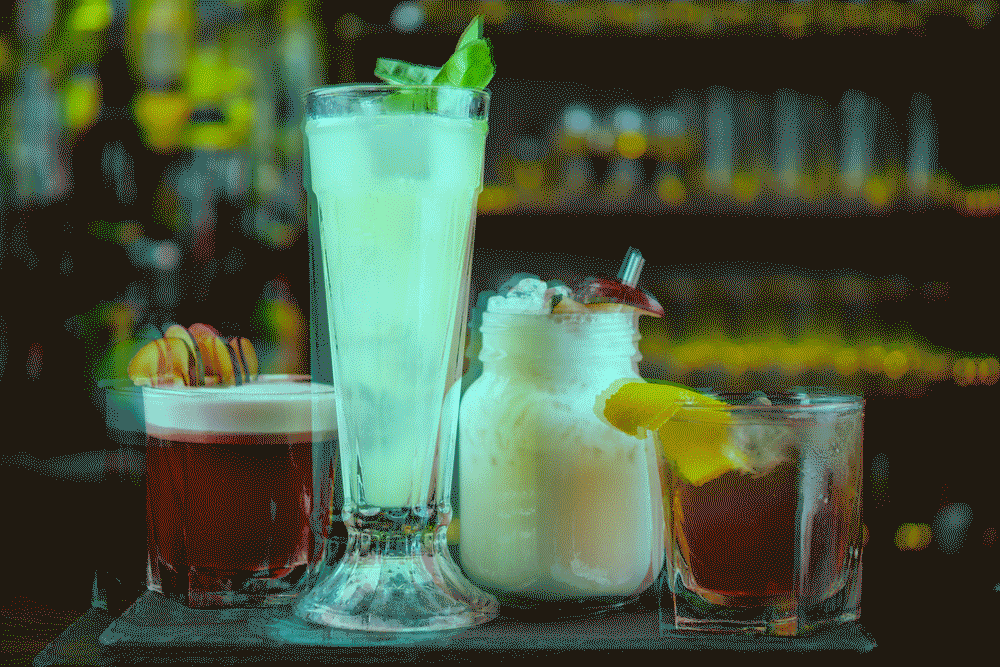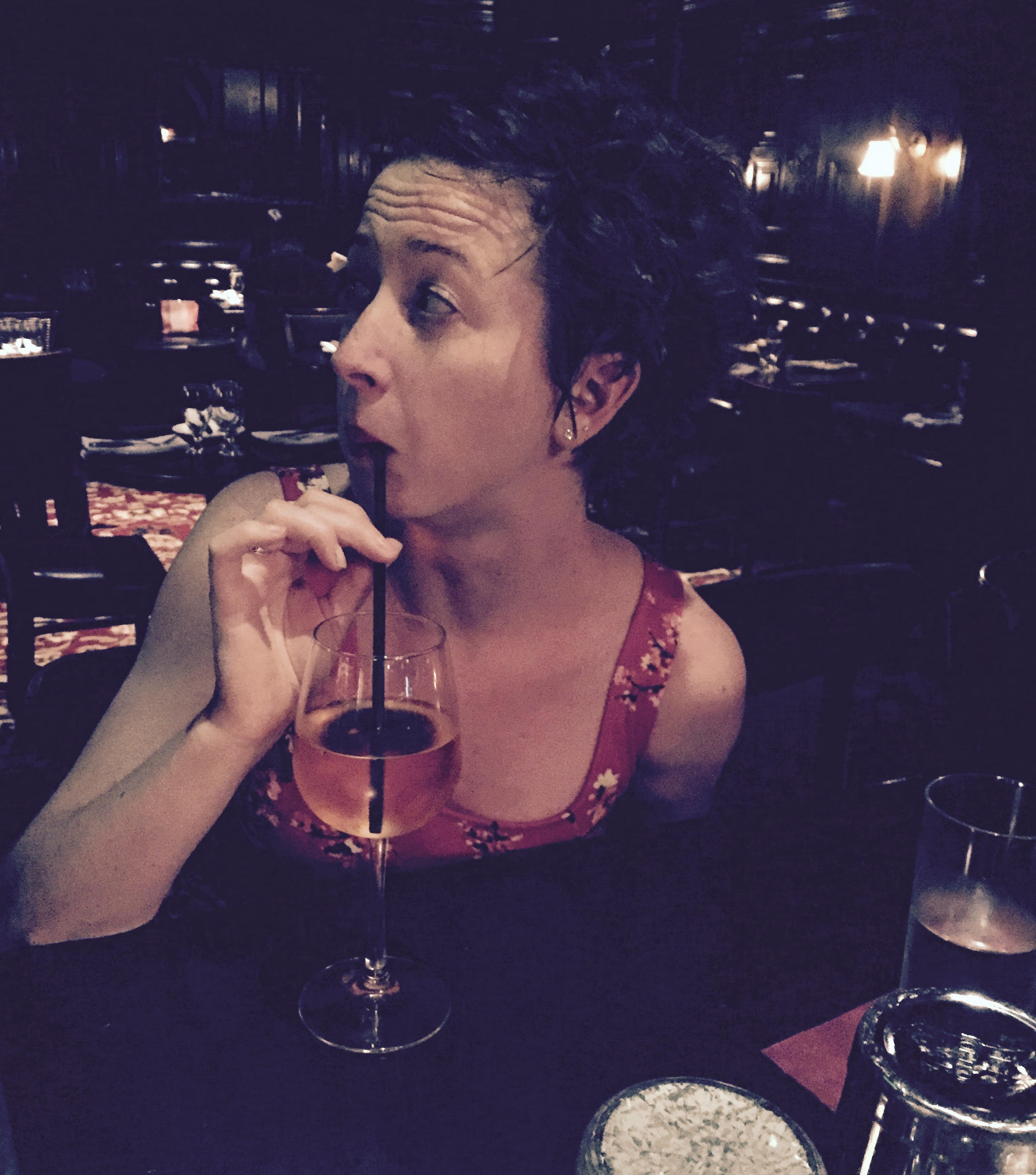If any cocktail ever successfully crossed over into the world of nonalcoholic beverages, it’s the mojito — with the mint, lime and simple syrup, the rum hardly matters. I’d say that four out of the five times I hear or see the word “virgin” at work, it’s followed by “mojito.”
Still, a small piece of my soul collapses whenever a customer orders one. Mojitos—virgin or otherwise—with their muddled mint and crushed ice, are time-consuming to prepare, and without being fortified by rum, the mint/lime/sugar/water combo goes down really fast.
Fast enough, in fact, that at the service bar, the ticket for a second MOCKTAIL: MOJITO pops out in less than five minutes. And then another. And another. And another. Many times it sets off a trend — a nearby table has seen the frothy concoction go by and wants to get in on the action. That’s when the orders start coming in waves — two or three at a time, half of them with rum, all of them with that godforsaken mint that gets in absolutely everything.
To the alcohol enthusiast, I’m sure the idea of a virgin mojito and other alcohol-free beverages seems odd: Why go to a bar if you don’t drink? Why curate recipes for beverages that don’t use your most lucrative inventory? Who are these people clamoring for mocktails with such vigor that there are now complicated booze-free drink menus? Are there really that many pregnant women, teenagers and recovering alcoholics hanging out at bars?
The short answer is that people choose not to drink for as many reasons as they choose to drink. And when you’re on the wagon, sometimes it’s nice to have options outside of Diet Coke or water.
The long answer, however, is far more nuanced: Bars do a lot more than provide access to alcohol.
Nonalcoholic beer, or near beer, has actually been in circulation for centuries. In Medieval Europe, beer with a very low alcohol content (less than 3 percent) was preferred to water, which was often contaminated and unsafe to drink. While Medieval breweries broke out the hard(er) stuff for festivals and feasts, low-proof beer was a staple of daily life. Near beer was a major industry in the U.S. during Prohibition as well, allowing thirsty Americans to at least pretend they were out having a cold one after work.
The appeal of low-ABV beers then, as it is now, was that you can consume a number of them without feeling the inebriating effects of alcohol. This prolongs the party, extends the night and allows drinkers to spend more time doing what alcohol does best: Cultivating an atmosphere for hanging with friends (or making new ones) while getting people out of their everyday headspace for a bit. The convivial atmosphere of bars is undeniable, as is their prominence in Western culture as hubs of social and political activity: The Revolution was born in a pub, after all.
So why not just stick to near beer?
For one thing, non alcoholic beer isn’t a flavor that works for everyone. But more importantly, near beer isn’t fully alcohol-free, so for some it goes against what being in recovery is all about. “My personal mantra is ‘all or nothing,’ and that goes from the beer I don’t drink to the full flavor cigarettes I do smoke,” says Trevor Christian, the bartender with eight years of sobriety under his belt who I interviewed about being a sober bartender earlier this year.
Mocktails, however, occupy the perfect middle ground. “Mocktails are just way more fun and interesting for people on both sides of the bar,” Christian explains. “The possibilities are almost endless, whereas near beer has a pretty limited spectrum.”
“Mocktails have been on every one of our menus,” says Bryan Dayton, co-owner and beverage director of OAK and Acorn, both in Denver. “As bartenders, we throw a house party every night. For me, it’s important for my guests to have an option. I want people to enjoy what they’re doing and not feel alienated — regardless of whether or not they drink.”
Acorn’s beverage menu is broken into sections according to alcohol content (booze-free, low booze, high booze) and includes four handcrafted mocktails. The Southeast Visions, for example, combines blackberries, coconut water, grenadine, lemon juice and Fee Brothers aromatic bitters, which is glycerin-based and therefore still nonalcoholic.
Having these kinds of options is key, Drayton says, to being what all restaurants and bars claim to be: Houses of hospitality. “A little while ago, I wasn’t drinking for a bit, and I went out and was bummed,” he continues. “I went to a really nice place, and they didn’t have anything for me. That was disappointing.”
“There’s a huge contingent of non-drinkers, people who don’t drink but still want to partake in the bar scene,” explains Steve Corman, co-owner with his wife Johanna of Vena’s Fizz House in Portland, Maine. “It’s about the experience. The look, the feel, the heft of the glass. It’s important.”
When Vena’s opened four years ago there was nothing else like it: a speakeasy-style barroom dedicated to complex, detailed mocktails, like the Faux-Groni (blood orange, lemon juice, anise syrup, wormwood, cedar and aromatic bitters for a non-alcoholic spin on the classic gin/vermouth/Campari Negroni). Even now, after it added booze in 2015, mocktails make up a large portion of Vena’s sales. “It’s a huge untapped market,” Johanna says. “We hear all day every day how great it is to have a place to go out with friends and partake in the bar scene and still have something interesting and exciting to drink,” she continued.
In this way, it’s somewhat analogous to another common habit: smoking. If people who smoke cigarettes were simply addicted to nicotine, the nicotine patch or gum would help every smoker who wants to quit from ever putting another cigarette in their mouth.
But that doesn’t happen.
According to the Office of the Surgeon General, just 17.7 percent of nicotine patch users successfully quit. There must be something else going on.
Johann Hari, a British journalist who delved deep into the start, causes and failures of the war on drugs in his book Chasing the Scream, uses this statistic to argue that the leading theory of drug use and addiction — that it’s caused by chemical dependency on a substance — is wrong. “The pharmacology of nicotine patches works just fine. You really are giving smokers the drug they are addicted to,” Hari writes. “There is just one problem: Even with a nicotine patch on you still want to smoke.”
Why might that be?
Well, the dedicated smokers I know use stepping outside for a smoke to punctuate their day; without the option of “I’m gonna go outside for a smoke,” the rhythms of the workday — or any day, really — break down.
Smoking is also an incredibly social habit. As a nonsmoker, I find it incredibly awkward to step outside and grab some air during a busy event and not have a cigarette in my hand. Sure, there’s plenty of people to talk to, but they all wonder what the fuck you’re doing out there with them.
In the same way, it doesn’t really matter if there’s no alcohol in a drink as long as that drink appears as if it might contain alcohol. It allows you to blend in, to instantly have common ground with the other people at the bar.
That’s the magic of the mocktail.
And the reason why I never make just one virgin mojito.

